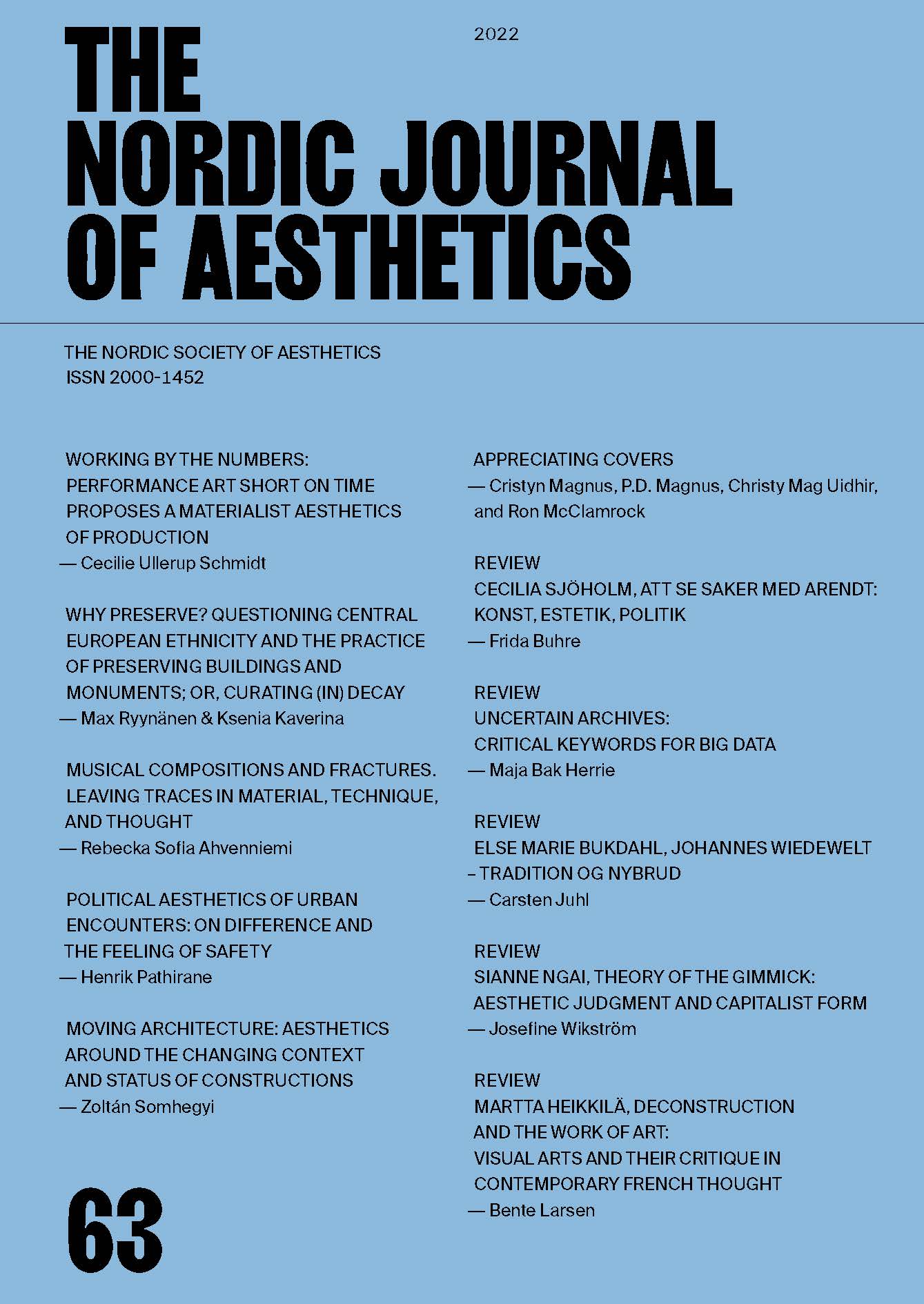APPRECIATING COVERS
DOI:
https://doi.org/10.7146/nja.v31i63.133122Keywords:
Cover songs, Rock music, Hearing inAbstract
A recording or performance of a song is a cover if there is an earlier, canonical recording of the song. It can seem intuitive to think that properly appreciating a cover requires considering it in relation to the original, or at least that doing so will yield a deeper appreciation. This intuition is supported by some philosophical accounts of covers. And it is complicated by the possibility of hearing in, whereby one hears elements of the original version in the cover. We argue that it can nevertheless be just as legitimate to consider a cover version on its own as it is to consider it in relation to the earlier recording that it is covering. In some cases, these two modes of appreciation will offer distinct rewards. In other cases, one mode will be substantially more rewarding than the other. The details matter, especially in complicated cases like covers of covers, but neither mode is privileged in principle.
Downloads
Published
How to Cite
Issue
Section
License
Copyright (c) 2022 Cristyn Magnus, P.D. Magnus, Christy Mag Uidhir, Ron Mcclamrock

This work is licensed under a Creative Commons Attribution 4.0 International License.
Authors who publish with this journal agree to the following terms:
- Authors retain copyright and grant the journal right of first publication with the work simultaneously licensed under a Creative Commons Attribution License that allows others to share the work with an acknowledgement of the work's authorship and initial publication in this journal.
- Authors are able to enter into separate, additional contractual arrangements for the non-exclusive distribution of the journal's published version of the work (e.g., post it to an institutional repository or publish it in a book), with an acknowledgement of its initial publication in this journal.
- Authors are permitted and encouraged to post their work online (e.g., in institutional repositories or on their website) prior to and during the submission process, as it can lead to productive exchanges, as well as earlier and greater citation of published work (See The Effect of Open Access).




